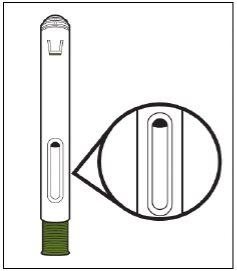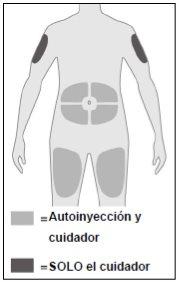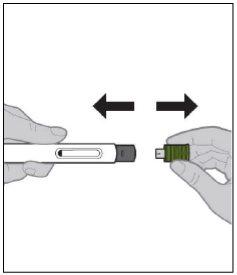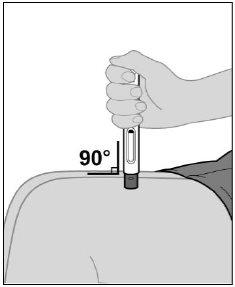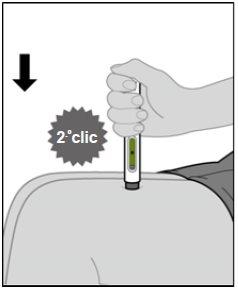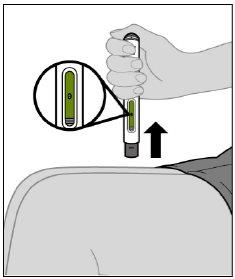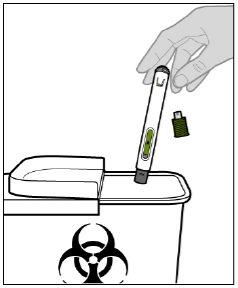

РЕМСІМА 120 мг РОЗЧИН ДЛЯ ІН'ЄКЦІЙ У ПЕРЕДНАПОВНЕНІЙ ШПРИЦ-РУЧЦІ


Інструкція із застосування РЕМСІМА 120 мг РОЗЧИН ДЛЯ ІН'ЄКЦІЙ У ПЕРЕДНАПОВНЕНІЙ ШПРИЦ-РУЧЦІ
Вступ
Опис: Інформація для користувача
Remsima 120 мг розчин для ін'єкції в попередньо наповненому шприці
інфліксімаб
Перш ніж почати використовувати цей лікарський засіб, уважно прочитайте весь опис, оскільки він містить важливу інформацію для вас.
- Збережіть цей опис, оскільки вам може знадобитися знову його прочитати.
- Ваш лікар також видасть вам картку інформації для пацієнта, яка містить важливу інформацію про безпеку, яку вам потрібно знати до та під час лікування Remsima.
- Коли ви починаєте нову картку, збережіть цю картку як посилання протягом 4 місяців після останньої дози Remsima.
- Якщо у вас виникнуть питання, проконсультуйтеся з вашим лікарем, фармацевтом або медсестрою.
- Цей лікарський засіб призначений тільки вам, і його не слід давати іншим людям, навіть якщо вони мають相同ні симптоми, оскільки це може їм нашкодити.
- Якщо ви відчуваєте побічні ефекти, проконсультуйтеся з вашим лікарем, фармацевтом або медсестрою, навіть якщо це побічні ефекти, які не вказані в цьому описі. Див. розділ 4.
Зміст опису
- Що таке Remsima і для чого він використовується
- Що вам потрібно знати перед початком використання Remsima
- Як використовувати Remsima
- Можливі побічні ефекти
- Збереження Remsima
- Зміст упаковки та додаткова інформація
- Інструкції з використання
1. Що таке Remsima і для чого він використовується
Remsima містить активну речовину інфліксімаб. Інфліксімаб є моноклональним антитілом – типом білка, який зв'язується з певною метою в організмі, званою TNF (фактор некрозу пухлини) альфа.
Remsima належить до групи лікарських засобів, званих «блокаторами TNF». Він використовується у дорослих для наступних запальних захворювань:
- Ревматоїдний артрит.
- Псоріатичний артрит
- Анкілозуючий спондиліт (хвороба Бехтерева)
- Псоріаз
- Хвороба Крона
- Ульцеративний коліт.
Remsima діє шляхом селективного зв'язування з TNF альфа та блокування його дії. TNF альфа бере участь у запальних процесах організму, тому блокування його дії може зменшити запалення в організмі.
Ревматоїдний артрит
Ревматоїдний артрит є запальним захворюванням суглобів. Якщо у вас активний ревматоїдний артрит, спочатку вам будуть призначені інші лікарські засоби. Якщо ці лікарські засоби не діють достатньо добре, вам буде призначений Remsima разом з іншим лікарським засобом, метотрексатом, для:
- зменшення симптомів захворювання,
- затримання пошкодження суглобів,
- поліпшення фізичного стану.
Псоріатичний артрит
Псоріатичний артрит є запальним захворюванням суглобів, зазвичай супроводжуваним псоріазом. Якщо у вас активний псоріатичний артрит, спочатку вам будуть призначені інші лікарські засоби. Якщо ці лікарські засоби не діють достатньо добре, вам буде призначений Remsima для:
- зменшення симптомів захворювання,
- зменшення пошкодження суглобів,
- поліпшення фізичного стану.
Анкілозуючий спондиліт (хвороба Бехтерева)
Анкілозуючий спондиліт є запальним захворюванням хребта. Якщо у вас анкілозуючий спондиліт, спочатку вам будуть призначені інші лікарські засоби. Якщо ці лікарські засоби не діють достатньо добре, вам буде призначений Remsima для:
- зменшення симптомів захворювання,
- поліпшення фізичного стану.
Псоріаз
Псоріаз є запальним захворюванням шкіри. Якщо у вас псоріаз у вигляді пластин, помірної або важкої форми, спочатку вам будуть призначені інші лікарські засоби або методи лікування, такі як фототерапія. Якщо ці лікарські засоби або методи лікування не діють достатньо добре, вам буде призначений Remsima для зменшення симптомів захворювання.
Ульцеративний коліт
Ульцеративний коліт є запальним захворюванням кишечника. Якщо у вас ульцеративний коліт, спочатку вам будуть призначені інші лікарські засоби. Якщо ці лікарські засоби не діють достатньо добре, вам буде призначений Remsima для лікування захворювання.
Хвороба Крона
Хвороба Крона є запальним захворюванням кишечника. Якщо у вас хвороба Крона, спочатку вам будуть призначені інші лікарські засоби. Якщо ці лікарські засоби не діють достатньо добре, вам буде призначений Remsima для:
- лікування активної хвороби Крона,
- зменшення кількості аномальних проходів (фістул) між кишечником і шкірою, які не були контрольовані іншими лікарськими засобами або хірургічним втручанням.
2. Що вам потрібно знати перед початком використання Remsima
Не використовуйте Remsima, якщо:
- ви алергічні на інфліксімаб або на будь-який інший компонент Remsima (перелічені в розділі 6),
- ви алергічні на білки, що походять від мишей,
- у вас є туберкульоз (ТБ) або інша важка інфекція, така як пневмонія або сепсис (важка бактеріальна інфекція крові),
- у вас є порушення функції серця (серцева недостатність) помірної або важкої форми.
Якщо будь-яка з цих ситуацій стосується вас, не використовуйте Remsima. Якщо ви не впевнені, проконсультуйтеся з вашим лікарем перед тим, як йому буде призначений Remsima.
Попередження та застереження
Проконсультуйтеся з вашим лікарем перед або під час лікування Remsima, якщо:
Ви раніше отримували лікування будь-яким лікарським засобом, що містить інфліксімаб
- Повідомте вашому лікареві, якщо ви раніше отримували лікування лікарськими засобами, що містять інфліксімаб, і тепер починаєте нове лікування Remsima.
- Якщо ви припинили лікування інфліксімабом більше ніж на 16 тижнів, існує більший ризик алергічних реакцій, коли ви починаєте знову лікування.
Місцеві реакції в місці ін'єкції
- Деякі пацієнти, які отримують інфліксімаб шляхом ін'єкції під шкіру, відчували місцеві реакції в місці ін'єкції. Симптоми місцевої реакції в місці ін'єкції можуть включати червоність, біль, свербіж, набряк, твердість, гематоми, кровотечу, відчуття холоду, оніміння, подразнення, висип, виразки, пухирі та корості на шкірі в місці ін'єкції.
- Більшість цих реакцій є легкими або помірними та зазвичай проходять самі собою протягом доби.
Інфекції
- Перед тим, як вам буде призначений Remsima, повідомте вашому лікареві, якщо у вас є інфекція, навіть якщо вона дуже легка.
- Перед тим, як вам буде призначений Remsima, повідомте вашому лікареві, якщо ви раніше жили або відвідували місце, де часто трапляються інфекції, такі як гістоплазмоз, кокцидіоїдомікоз або бластомікоз. Ці інфекції викликані певними типами грибів, які можуть уражати легені або інші частини організму.
- Ви можете легше заразитися інфекціями під час лікування Remsima. Якщо вам 65 років або більше, існує більший ризик.
- Ці інфекції можуть бути важкими та включати туберкульоз, інфекції, викликані вірусами, грибами, бактеріями або іншими організмами в середовищі, та сепсис, який може бути потенційно смертельним.
Повідомте вашому лікареві негайно, якщо ви відчуваєте симптоми інфекції під час лікування Remsima, такі як гарячка, кашель, симптоми грипу, загальне нездужання, червоність або відчуття тепла на шкірі, рани або проблеми з зубами. Ваш лікар може рекомендувати тимчасово припинити лікування Remsima.
Туберкульоз (ТБ)
- Це дуже важливо, щоб ви повідомили вашому лікареві, якщо ви раніше мали ТБ або були в тісному контакті з людиною, яка мала або має ТБ.
- Ваш лікар проведе тест, щоб побачити, чи у вас є ТБ. Було повідомлено про випадки ТБ у пацієнтів, які отримували інфліксімаб, навіть у тих, хто вже був-treated з лікарськими засобами проти ТБ. Ваш лікар запише ці тести в вашу картку інформації для пацієнта.
- Якщо ваш лікар вважає, що ви перебуваєте в групі ризику захворювання на ТБ, вас можуть лікувати лікарськими засобами проти ТБ перед тим, як вам буде призначений Remsima.
Повідомте вашому лікареві негайно, якщо ви відчуваєте симптоми ТБ під час лікування Remsima. Симптоми можуть включати тривалу кашель, втрату ваги, відчуття втоми, гарячку, нічні поти.
Вірус гепатиту Б
- Перед тим, як вам буде призначений Remsima, повідомте вашому лікареві, якщо ви є носієм гепатиту Б або якщо ви раніше мали гепатит Б.
- Повідомте вашому лікареві, якщо ви вважаєте, що можете перебувати в групі ризику захворювання на гепатит Б.
- Ваш лікар повинен провести тести на вірус гепатиту Б.
- Лікування блокаторами TNF, такими як Remsima, може викликати реактивацію вірусу гепатиту Б у пацієнтів, які є носіями цього вірусу, що в деяких випадках може бути потенційно смертельним.
- Якщо ви відчуваєте реактивацію гепатиту Б, ваш лікар може бути змушений припинити лікування, і може призначити лікарські засоби, такі як антивірусна терапія, з підтримуючим лікуванням.
Проблеми з серцем
- Повідомте вашому лікареві, якщо у вас є проблеми з серцем, такі як легка серцева недостатність.
- Ваш лікар хоче буде контролювати ваше серце.
Повідомте вашому лікареві негайно, якщо ви відчуваєте нові симптоми або погіршення серцевої недостатності під час лікування Remsima. Симптоми можуть включати труднощі з диханням або набряк ніг.
Рак і лімфома
- Перед тим, як вам буде призначений Remsima, повідомте вашому лікареві, якщо ви раніше мали лімфому (тип раку крові) або будь-який інший рак.
- Пацієнти з важким ревматоїдним артритом, які мали захворювання протягом тривалого часу, можуть перебувати в групі підвищеного ризику розвитку лімфоми.
- Пацієнти, які отримують лікування Remsima, можуть перебувати в групі підвищеного ризику розвитку лімфоми або іншого типу раку.
- Деякі пацієнти, які отримували блокатори TNF, включаючи інфліксімаб, мали рідкий тип раку, званий гепатоспленічний Т-клітинний лімфом. Більшість цих пацієнтів були молодими чоловіками або хлопцями з хворобою Крона або ульцеративним колітом. Цей тип раку зазвичай є смертельним. Практично всі ці пацієнти також отримували лікарські засоби з азатіоприном або 6-меркаптопурином, крім блокаторів TNF.
- Деякі пацієнти, які отримували інфліксімаб, мали певні типи раку шкіри. Повідомте вашому лікареві, якщо ви відчуваєте зміни на шкірі або зростання на шкірі під час або після лікування.
- Деякі жінки, які отримували інфліксімаб для лікування ревматоїдного артриту, мали рак шийки матки. Жінкам, які отримують лікування Remsima, навіть тим, хто старше 60 років, лікар може рекомендувати регулярні огляди на предмет раку шийки матки.
Хвороба легень або великі курильщики
- Перед тим, як вам буде призначений Remsima, повідомте вашому лікареві, якщо у вас є хвороба легень, така як хронічна обструктивна хвороба легень (ХОХЛ), або якщо ви великий курильщик.
- Пацієнти з ХОХЛ та великі курильщики можуть перебувати в групі підвищеного ризику розвитку раку під час лікування Remsima.
Хвороба нервової системи
- Повідомте вашому лікареві, якщо у вас є проблема, яка впливає на вашу нервову систему, перед тим, як вам буде призначений Remsima. Це включає розсіяний склероз, синдром Гієна-Барре, якщо у вас були напади або якщо ви мали діагноз «нейрит оптичного нерва».
Повідомте вашому лікареві негайно, якщо ви відчуваєте симптоми захворювання нервової системи під час лікування Remsima. Симптоми можуть включати зміни зору, слабкість у руках або ногах, оніміння або поколювання в будь-якій частині тіла.
Аномальні отвори на шкірі
- Проконсультуйтеся з вашим лікарем, якщо у вас є аномальні виразки на шкірі (фістули) перед тим, як вам буде призначений Remsima.
Вакцини
- Проконсультуйтеся з вашим лікарем, якщо ви нещодавно отримали або повинні отримати вакцину.
- Перед тим, як почати лікування Remsima, ви повинні отримати рекомендуємо вакцини. Ви можете отримати деякі вакцини під час лікування Remsima, але не повинні отримувати вакцини з живими мікроорганізмами (вакцини, які містять живий, але ослаблений патоген) під час лікування Remsima, оскільки вони можуть викликати інфекції. Якщо ви отримали Remsima під час вагітності, ваша дитина також може перебувати в групі підвищеного ризику захворювання на інфекцію. Повідомте лікаря вашої дитини та інших медичних працівників про ваше лікування Remsima, щоб вирішити, коли ваша дитина може бути вакцинована, включаючи вакцини з живими мікроорганізмами, такими як вакцина БЦЖ (використовується для профілактики туберкульозу).
- Якщо ви перебуваєте в період лактації, важливо повідомити лікаря вашої дитини та інших медичних працівників про ваше лікування Remsima перед тим, як ваша дитина буде вакцинована.
Для більшої інформації див. розділ про вагітність та лактацію
Терапевтичні інфекційні агенти
- Повідомте вашому лікареві, якщо ви нещодавно отримали або повинні отримати лікування терапевтичним інфекційним агентом (наприклад, інстиляцією БЦЖ, використовуваною для лікування раку).
Операції або стоматологічні процедури
- Повідомте вашому лікареві, якщо ви повинні пройти операцію або стоматологічну процедуру.
- Повідомте хірурга або стоматолога, що ви перебуваєте на лікуванні Remsima, показавши їм вашу картку інформації для пацієнта.
Проблеми з печінкою
- Деякі пацієнти, які отримували Remsima, мали важкі проблеми з печінкою.
- Повідомте вашому лікареві негайно, якщо ви відчуваєте симптоми проблем з печінкою під час лікування Remsima. Симптоми можуть включати жовтушність шкіри та очей, темну сечу, біль або набряк у верхній правій частині живота, біль у суглобах, висип, гарячку.
Низький рівень клітин крові
- У деяких пацієнтів, які отримують Remsima, організм не може виробляти достатньо клітин крові, які допомагають боротися з інфекціями або зупиняти кровотечу.
- Повідомте вашому лікареві негайно, якщо ви відчуваєте симптоми низького рівня клітин крові під час лікування Remsima. Симптоми можуть включати тривалу гарячку, кровотечу або появу синяків з легкістю, маленьких червоних або фіолетових плям, викликаних кровотечею під шкірою, або блідість.
Розлад імунної системи
- Деякі пацієнти, які отримували Remsima, мали симптоми розладу імунної системи, званого лупусом.
- Повідомте вашому лікареві негайно, якщо ви розвиваєте симптоми лупуса під час лікування Remsima. Симптоми можуть включати біль у суглобах або висип на щоках або руках через чутливість до сонця.
Діти та підлітки
Не давайте цей лікарський засіб дітям та підліткам молодше 18 років, оскільки немає даних, які підтверджують, що цей лікарський засіб є безпечним та ефективним для цієї вікової групи.
Інші лікарські засоби та Remsima
Пацієнти з запальними захворюваннями вже приймають лікарські засоби для лікування своєї проблеми. Ці лікарські засоби можуть викликати побічні ефекти. Ваш лікар порадить вам, які інші лікарські засоби ви повинні продовжувати приймати під час лікування Remsima.
Повідомте вашому лікареві, якщо ви використовуєте, нещодавно використовували або можете використовувати будь-який інший лікарський засіб, включаючи будь-який інший лікарський засіб для лікування хвороби Крона, ульцеративного коліту, ревматоїдного артриту, анкілозуючого спондиліту, псоріатичного артриту або псоріазу, або лікарські засоби, придбані без рецепта лікаря, такі як вітаміни або лікарські рослини.
Особливо повідомте вашому лікареві, якщо ви використовуєте будь-який з наступних лікарських засобів:
- Лікарські засоби, які впливають на вашу імунну систему.
- Kineret (який містить анакінру). Remsima та Kineret не повинні використовуватися одночасно.
- Orencia (який містить абатацепт). Remsima та Orencia не повинні використовуватися одночасно.
Не повинні отримувати вакцини з живими мікроорганізмами під час лікування Remsima. Якщо ви приймали Remsima під час вагітності або якщо ви приймаєте Remsima під час лактації, повідомте лікаря вашої дитини та інших медичних працівників про ваше лікування Remsima перед тим, як ваша дитина буде вакцинована.
Якщо ви не впевнені щодо чого-небудь з вищезазначеного, проконсультуйтеся з вашим лікарем, фармацевтом або медсестрою перед тим, як почати використовувати Remsima.
Вагітність, лактація та фертильність
- Якщо ви вагітні або перебуваєте в період лактації, вважаєте, що можете бути вагітною або плануєте завагітніти, проконсультуйтеся з вашим лікарем перед тим, як використовувати цей лікарський засіб. Remsima повинен використовуватися під час вагітності або лактації тільки якщо ваш лікар вважає, що це необхідно для вас.
- Ви повинні уникати вагітності під час лікування Remsima та до 6 місяців після закінчення лікування. Обговоріть використання засобів контрацепції протягом цього часу з вашим лікарем.
- Якщо ви приймали Remsima під час вагітності, ваша дитина може перебувати в групі підвищеного ризику захворювання на інфекцію.
- Важливо повідомити лікаря вашої дитини та інших медичних працівників про ваше лікування Remsima перед тим, як ваша дитина буде вакцинована. Якщо ви приймали Remsima під час вагітності, вакцинація вашої дитини вакциною БЦЖ (використовуваною для профілактики туберкульозу) протягом 12 місяців після народження може викликати інфекцію з важкими ускладненнями, включаючи смерть. Не повинні вакциновувати вашу дитину вакцинами з живими мікроорганізмами, такими як вакцина БЦЖ, протягом 12 місяців після народження, якщо тільки лікар вашої дитини не порадить іншого. Для більшої інформації див. розділ про вакцини.
- Якщо ви перебуваєте в період лактації, важливо повідомити лікаря вашої дитини та інших медичних працівників про ваше лікування Remsima перед тим, як ваша дитина буде вакцинована. Не повинні вакциновувати вашу дитину вакцинами з живими мікроорганізмами під час лактації, якщо тільки лікар вашої дитини не порадить іншого.
- У дітей, народжених від жінок, які приймали інфліксімаб під час вагітності, було повідомлено про важке зниження рівня білих клітин крові. Якщо ваша дитина має гарячку або інфекції, негайно зверніться до лікаря вашої дитини.
Водіння автомобіля та використання машин
Мало ймовірно, що Remsima вплине на вашу здатність водити автомобіль або використовувати інструменти чи машини. Якщо ви відчуваєте втому, головокружіння або нездужання після прийому Remsima, не водьте автомобіль та не використовуйте інструменти чи машини.
Remsima містить натрій та сорбітол
Цей лікарський засіб містить менше 1 ммоль натрію (23 мг) на дозу; це означає, що він практично не містить натрію, та 45 мг сорбітолу в кожній дозі 120 мг.
3. Як буде вводитися Ремсіма
Слідувати точно інструкціям щодо введення цього лікарського засобу, вказаним вашим лікарем.
У разі сумнівів зверніться знову до свого лікаря.
Ревматоїдний артрит
Ваш лікар розпочне лікування з однієї або двох інфузій Ремсіми по 3 мг на кг маси тіла (вводяться в вену, зазвичай у руку, протягом 2 годин). Якщо для початку лікування будуть введені ін'єкції Ремсіми під шкіру, то Ремсіма 120 мг буде введено як ін'єкція під шкіру, після чого будуть зроблені додаткові ін'єкції під шкіру через 1, 2, 3 і 4 тижні після першої ін'єкції, а потім кожні 2 тижні. Звичайна рекомендуємая доза ін'єкції Ремсіми під шкіру становить 120 мг один раз на 2 тижні, незалежно від маси тіла.
Псоріатичний артрит, анкілозуючий спондиліт (хвороба Бехтерева) та псоріаз
Ваш лікар розпочне лікування з двох інфузій Ремсіми по 5 мг на кг маси тіла (вводяться в вену, зазвичай у руку, протягом 2 годин). Вони вводяться з інтервалом у 2 тижні. Через 4 тижні після останньої інфузії Ремсіма буде введено під шкіру (підшкірна ін'єкція).
Звичайна рекомендуємая доза ін'єкції Ремсіми під шкіру становить 120 мг один раз на 2 тижні, незалежно від маси тіла.
Хвороба Крона та виразковий коліт
Ваш лікар розпочне лікування з двох або трьох інфузій Ремсіми по 5 мг на кг маси тіла (вводяться в вену, зазвичай у руку, протягом 2 годин). Вони вводяться з інтервалом у 2 тижні та можуть бути введені додаткові інфузії через 4 тижні після другої інфузії. Через 4 тижні після останньої інфузії Ремсіма буде введено під шкіру (підшкірна ін'єкція).
Звичайна рекомендуємая доза ін'єкції Ремсіми під шкіру становить 120 мг один раз на 2 тижні, незалежно від маси тіла.
Як буде вводитися Ремсіма
- Ремсіма 120 мг розчин для ін'єкції вводиться лише під шкіру (підшкірно). Важливо звернутися до маркування продукції, щоб переконатися, що вводиться правильна форма лікарського засобу згідно з рецептом.
- Для пацієнтів з ревматоїдним артритом лікар може розпочати лікування Ремсімою з однієї або двох інфузій Ремсіми. Для пацієнтів з хворобою Крона, виразковим колітом, анкілозуючим спондилітом, псоріатичним артритом або псоріазом будуть введені дві інфузії Ремсіми для початку лікування. Для пацієнтів з хворобою Крона або виразковим колітом будуть введені дві або три інфузії інфузії інфіксимабу для початку лікування Ремсімою.
- Для пацієнтів з ревматоїдним артритом, якщо лікування розпочато без інфузій Ремсіми, наступна таблиця показує, з якою частотою зазвичай буде вводитися Ремсіма 120 мг під шкіру після першої дози.
2-га доза | Через 1 тиждень після 1-ї дози |
3-тя доза | Через 2 тижні після 1-ї дози |
4-та доза | Через 3 тижні після 1-ї дози |
5-та доза | Через 4 тижні після 1-ї дози |
Інші дози | Через 6 тижнів після 1-ї дози та потім кожні 2 тижні |
- Ваш лікар або медсестра введуть інфузії інфіксимабу з інтервалом у 2 тижні та можуть бути введені додаткові інфузії через 4 тижні після другої інфузії для пацієнтів з хворобою Крона та виразковим колітом за рішенням лікаря для початку лікування Ремсімою. Перша підшкірна ін'єкція Ремсіми буде введена через 4 тижні після останньої інфузії, після чого будуть зроблені ін'єкції Ремсіми під шкіру кожні 2 тижні.
- Перша підшкірна ін'єкція Ремсіми буде введена під наглядом лікаря.
- Після належної підготовки, якщо ви відчуваєте себе добре підготовленим і впевнено для введення собі Ремсіми, лікар може дозволити вам самостійно вводити наступні дози Ремсіми вдома.
- Поговоріть з лікарем, якщо у вас є питання щодо того, як вводити собі ін'єкцію. Ви знайдете «Інструкції з застосування» у кінці буклета.
Якщо ви використали більше Ремсіми, ніж потрібно
Якщо ви використали більше Ремсіми, ніж потрібно (або ввели надто велику кількість за один раз, або використовували занадто часто), негайно зверніться до лікаря, фармацевта або медсестри. Зазвичай тримайте упаковку лікарського засобу при собі, навіть якщо вона порожня.
Якщо ви забули використати Ремсіму
Пропущена доза до 7 днів
Якщо ви пропустили дозу Ремсіми до 7 днів після запланованої первинної дози, вам потрібно негайно прийняти пропущену дозу. Прийміть наступну дозу в заплановану первинну дату та продовжуйте первинний графік прийому.
Пропущена доза протягом 8 або більше днів
Якщо ви пропустили дозу Ремсіми 8 або більше днів після запланованої первинної дози, не приймайте пропущену дозу. Прийміть наступну дозу в заплановану первинну дату та продовжуйте первинний графік прийому.
Якщо ви не впевнені, коли вводити Ремсіму, зверніться до лікаря.
Якщо у вас є інші питання щодо використання цього лікарського засобу, зверніться до лікаря, фармацевта або медсестри.
4. Можливі побічні ефекти
Як і всі лікарські засоби, цей лікарський засіб може викликати побічні ефекти, хоча не всі люди їх відчувають. Більшість побічних ефектів є легкими або помірними. Однак деякі пацієнти можуть відчувати серйозні побічні ефекти та можуть потребувати лікування. Побічні ефекти також можуть виникати після закінчення лікування Ремсімою.
Негайно повідомте свого лікаря, якщо ви помітите щось з наступного:
- Ознаки алергічної реакції, такі як набряк обличчя, губ, рота або горла, що може викликати труднощі з ковтанням або диханням, висип на шкірі, кропив'янка, набряк рук, ніг або стоп, деякі з цих реакцій можуть бути серйозними або потенційно смертельними. Алергічна реакція може виникнути протягом 2 годин після ін'єкції або пізніше. Інші алергічні побічні ефекти можуть виникати до 12 днів після ін'єкції, такі як біль у м'язах, гарячка, біль у суглобах або щелепі, біль у горлі або головний біль.
- Ознаки місцевої реакції на місці ін'єкції, такі як червоність, біль, свербіж, набряк, твердість, синяки, кровотеча, відчуття холоду, оніміння, подразнення, висип, виразка, фурункули та струп.
- Ознаки серцевого захворювання, такі як біль або дискомфорт у грудях, біль у руках, біль у животі, труднощі з диханням, тривога, головокружіння, млость, оmdlіння, потовиділення, нудота (відчуття захворювання), блювота, серцебиття або стукотіння у грудях, швидке або повільне серцебиття, та набряк ніг.
- Ознаки інфекції (в тому числі ТБ), такі як гарячка, втома, кашель, який може бути постійним, труднощі з диханням, симптоми, подібні до грипу, вагова недостатність, нічне потовиділення, діарея, рани, нагромадження гною у животі або навколо ануса (абсцес), стоматологічні проблеми або відчуття свербіння під час сечовипускання.
- Можливі ознаки раку, які включають, хоча не обмежуються, запалення лімфатичних вузлів, вагова недостатність, гарячка, вузли на шкірі, зміни на молочних залозах або пігментації шкіри, або вагінальне кровотеча.
- Ознаки легеневого захворювання, такі як кашель, труднощі з диханням або стиск у грудях.
- Ознаки захворювання нервової системи (в тому числі офтальмологічні проблеми), такі як ознаки інсульту (наглий оніміння або слабкість обличчя, рук або ніг, особливо на одній стороні тіла; раптова плутаність, труднощі з мовленням або розумінням; труднощі з баченням одним або обоєма очима, труднощі з ходьбою, головокружіння, втрату рівноваги або координації чи сильний головний біль), судоми, оніміння/поколювання в будь-якій частині тіла, або слабкість у руках або ногах, порушення зору, такі як подвійне бачення чи інші офтальмологічні проблеми.
- Ознаки захворювання печінки(в тому числі інфекція вірусом гепатиту Б, коли у вас раніше була інфекція гепатиту Б), такі як жовті плями на шкірі та очах, темна сеча, біль або набряк у верхній правій частині живота, біль у суглобах, висип на шкірі, або гарячка.
- Ознаки розладу імунної системи, такі як біль у суглобах або висип, чутливий до сонця на щеках або руках (люпус) або кашель, труднощі з диханням, гарячка або висип на шкірі (саркоїдоз).
- Ознаки низького рівня клітин крові, такі як тривала гарячка, кровотеча або появлення синяків з легкістю, маленькі червоні або фіолетові плями, викликані кровотечею під шкірою, або блідість.
- Ознаки серйозних проблем шкіри, таких як плями або круглі червоні плями з пухирями в центрі на тулубі, великі ділянки шкіри, відшарованої та піднятої (ексфоліативної), виразки у роті, горлі, носі, геніталіях та очах або маленькі пухирі, заповнені гноєм, які можуть поширюватися по тілу. Ці реакції шкіри можуть бути супроводжувані гарячкою.
Негайно повідомте свого лікаря, якщо ви помітите щось з вищезазначеного.
Наступні побічні ефекти були спостережені при застосуванні Ремсіми:
Дуже часті:можуть впливати на більше 1 з 10 осіб
- Біль у животі, нудота
- Вірусні інфекції, такі як герпес або грип
- Інфекції верхніх дихальних шляхів, такі як синусит
- Головний біль
- Побічний ефект через ін'єкцію
- Біль.
Часті:можуть впливати до 1 з 10 осіб
- Зміни функціонування печінки, підвищення рівня печінкових ферментів (виявляються в аналізах крові)
- Інфекції легенів або грудної клітки, такі як бронхіт або пневмонія
- Труднощі з диханням або болючість, біль у грудях
- Кровотеча у животі або кишечнику, діарея, диспепсія, печія, запор
- Висип, подібний до кропив'янки (свербіж), висип на шкірі з свербінням або сухою шкірою
- Проблеми з рівновагою або відчуття головокружіння
- Гарячка, підвищення потовиділення
- Проблеми з циркуляцією, такі як низький або високий тиск
- Синяки, почервоніння шкіри (рубефакція)
- Відчуття втоми або слабкості
- Бактеріальні інфекції, такі як сепсис, абсцес або інфекція шкіри (целюліт)
- Грибкові інфекції шкіри
- Проблеми крові, такі як анемія або низький рівень білих клітин
- Запалення лімфатичних вузлів
- Депресія, проблеми з сном
- Офтальмологічні проблеми, включаючи червоні очі та інфекції
- Швидке серцебиття (тахікардія) або серцебиття
- Біль у суглобах, м'язах або спині
- Інфекція сечовивідних шляхів
- Псоріаз, проблеми шкіри, такі як екзема та випадіння волосся
- Реакції на місці ін'єкції, такі як біль, набряк, червоність або свербіж
- Озноби, нагромадження рідини під шкірою, яке викликає набряк
- Відчуття оніміння або поколювання.
Рідкі:можуть впливати до 1 з 100 осіб
- Недостатність кровотоку, набряк вени
- Нагромадження крові поза кровоносними судинами (гематома) або синяки
- Проблеми шкіри, такі як пухирі, бородавки, аномальна пігментація шкіри, або опухлі губи, або загрубіння шкіри, або червоність, шкіра з лусками та відшаруванням
- Серйозні алергічні реакції (наприклад, анафілаксія), розлад імунної системи, називається люпус, алергічні реакції на чужорідні білки
- Рани, які повільно загоюються
- Запалення печінки (гепатит) або жовчного міхура, пошкодження печінки
- Відчуття забуття, раздражливість, плутаність, нервозність
- Офтальмологічні проблеми, включаючи розмите зір або зниження зору, опухлі очі або з орзолами
- Поганий стан серця або погіршення його стану, зниження частоти серцебиття
- Оmdlіння
- Судоми, проблеми з нервами
- Виразка в кишечнику або кишкова непрохідність, біль або спазми у животі.
- Запалення підшлункової залози (панкреатит)
- Грибкові інфекції, такі як інфекція, викликана кандидою, або грибкова інфекція нігтів
- Легеневі проблеми (наприклад, набряк)
- Рідини навколо легенів (плевральний випот)
- Зуження дихальних шляхів у легенях, яке викликає труднощі з диханням
- Запалення мембрани, яка захищає легені, яке викликає сильний біль у грудях, який погіршується під час дихання (плеврис)
- Туберкульоз
- Ниркові інфекції
- Низький рівень тромбоцитів, надто багато білих клітин у крові, синяки або чорні плями
- Вагінальні інфекції
- Результат аналізу крові, який показує «антитіла» проти вашого власного тіла.
- Зміни рівня холестерину та жиру у крові.
- Збільшення ваги (для більшості пацієнтів збільшення ваги було малим).
Рідкісні:можуть впливати до 1 з 1000 осіб
- Рідкий тип кров'яного раку (лімфома)
- Кров вашого тіла не забезпечує достатньо кисню, проблеми з циркуляцією, такі як звуження кровоносного судини
- Запалення мембран, які захищають мозок (менінгіт)
- Інфекції, викликані ослабленою імунною системою
- Інфекція вірусом гепатиту Б, коли у вас раніше була інфекція гепатиту Б
- Запалення печінки, викликане проблемою з імунною системою (автоімунний гепатит)
- Печінкова проблема, яка викликає жовті плями на шкірі та очах (жовтіння)
- Набряк або аномальний ріст тканин
- Серйозна алергічна реакція, яка може викликати втрату свідомості та бути потенційно смертельною (анafilактичний шок)
- Запалення малих кровоносних судин (васкуліт)
- Розлади імунної системи, які можуть впливати на легені, шкіру та лімфатичні вузли (наприклад, саркоїдоз)
- Нагромадження імунних клітин внаслідок запальної реакції (гранулематозні ураження)
- Відчуття байдужості або відсутності емоцій
- Серйозні проблеми шкіри, такі як токсична епідермальна некроліз, синдром Стівенса-Джонсона та гостра загальна пустулозна екзантема
- Інші проблеми шкіри, такі як еритема мультиформе, пухирі та відшарування шкіри, або фурункули (фуронкульоз)
- Серйозні захворювання нервової системи, такі як трансверзальна мієліт, захворювання, подібне до множинного склерозу, оптичний нейрит та синдром Гієна-Барре
- Запалення в оці, яке може викликати зміни зору, включаючи сліпоту
- Рідини навколо серця (перикардіальний випот)
- Серйозні легеневі проблеми (наприклад, інтерстиціальне легеневе захворювання)
- Меланома (тип шкіряного раку)
- Рак шийки матки
- Низький рівень клітин крові, включаючи сильне зниження кількості білих клітин у крові
- Маленькі червоні або фіолетові плями, викликані кровотечею під шкірою
- Аномальні значення білка крові, називається «комплементний фактор», який є частиною імунної системи
- Ліхеноподібні реакції (свербіжний висип на шкірі, червоний або фіолетовий, та/або товсті біло-сірі лінії на слизових оболонках).
Частота невідома:не може бути оцінена на основі наявних даних
- Рак
- Рідкий тип кров'яного раку, який переважно影响ує молодих чоловіків (гепатоспленічний Т-клітинний лімфома)
- Печінкова недостатність
- Карцинома Меркеля (тип шкіряного раку)
- Саркома Капозі, рідкий тип раку, пов'язаний з інфекцією вірусом людського герпесу 8. Саркома Капозі зазвичай проявляється частіше як шкіряні ураження фіолетового кольору
- Pогіршення захворювання, яке називається дерматоміозитом (проявляється як висип на шкірі, супроводжуваний слабкістю м'язів)
- Серцевий напад
- Інсульт
- Тимчасова втрата зору під час або протягом 2 годин після інфузії
- Інфекція, викликана вакциною з живими мікроорганізмами, через ослаблену імунну систему.
Звіт про побічні ефекти
Якщо ви відчуваєте будь-який побічний ефект, зверніться до лікаря, фармацевта або медсестри, навіть якщо це можливі побічні ефекти, які не перераховані в цьому буклеті. Ви також можете повідомити про них безпосередньо через національну систему повідомлень, включену до додатку V.
Інформуючи про побічні ефекти, ви можете допомогти надати більше інформації про безпеку цього лікарського засобу.
5. Зберігання Ремсіми
- Тримайте цей лікарський засіб поза зоною досяжності дітей.
- Не використовуйте цей лікарський засіб після дати закінчення терміну зберігання, вказаної на етикетці та коробці після «CAD». Дата закінчення терміну зберігання — останній день місяця, який вказано.
- Зберігайте у холодильнику (між 2°C та 8°C). Не заморожуйте. Тримайте лікарський засіб у первинній упаковці, щоб захистити його від світла.
- Цей лікарський засіб також можна зберігати в оригінальній коробці поза холодильником до максимальної температури 25°C протягом одного періоду до 28 днів, але не пізніше дати закінчення терміну зберігання. У цьому випадку не слід повертати до холодильника. Напишіть нову дату закінчення терміну зберігання на коробці, включаючи день/місяць/рік. Вийміть цей лікарський засіб, якщо він не був використаний до нової дати закінчення терміну зберігання або дати закінчення терміну зберігання, вказаної на коробці, що раніше відбувається.
- Лікарські засоби не повинні викидати в каналізацію або сміття. Спитайте у фармацевта, як позбутися упаковок та лікарських засобів, які вам більше не потрібні. Таким чином, ви допоможете захистити навколишнє середовище.
6. Зміст упаковки та додаткова інформація
Склад Ремсіми
- Активна речовина - інфліксімаб. Кожна попередньо наповнена шприц-ручка містить 120 мг інфліксімабу.
- Інші компоненти - оцтова кислота, тригідрат ацетату натрію, сорбітол, полісорбат 80 та вода для ін'єкційних препаратів.
Вигляд продукту та вміст упаковки
Ремсіма - прозора до опалесцентної, безбарвна до світло-коричневої рідини, яка поставляється в шприц-ручці одноразового використання.
Кожна упаковка містить 1 шприц-ручку з 2 ватними підпалинами, змоченими в спирті, 2 шприц-ручки з 2 ватними підпалинами, змоченими в спирті, 4 шприц-ручки з 4 ватними підпалинами, змоченими в спирті, або 6 шприц-ручок з 6 ватними підпалинами, змоченими в спирті.
Не всі розміри упаковок можуть бути доступні для продажу.
Власник дозволу на маркетинг
Celltrion Healthcare Hungary Kft.
1062 Будапешт
Váci út 1-3. WestEnd Office Building B торон
Угорщина
Виробник
Millmount Healthcare Ltd.
Block 7
City North Business Campus
Stamullen, Co. Meath K32 YD60
Ірландія
Nuvisan GmbH
Wegenerstraße 13,
89231 Ной-Ульм,
Німеччина
Nuvisan France SARL
2400, Route des Colles,
06410, Біо,
Франція
Kymos, SL
Ronda De Can Fatjó 7B, Parc Tecnològic del Vallès,
Cerdanyola del Vallès,
Барселона, 08290, Іспанія
Midas PharmaGmbH
Rheinstraße 49
55218 Інгельгайм-ам-Рейн
Німеччина
Для отримання додаткової інформації щодо цього лікарського засобу зверніться до місцевого представника власника дозволу на маркетинг:
Бельгія/Белгique/Бельгія Celltrion Healthcare Belgium BVBA Тел: + 32 1528 7418 | Литва Celltrion Healthcare Hungary Kft. 1062 Будапешт Váci út 1-3. WestEnd Office Building B торон Угорщина |
| Люксембург/Люксембург Celltrion Healthcare Belgium BVBA Тел: + 32 1528 7418 |
Чехія Celltrion Healthcare Hungary Kft. 1062 Будапешт Váci út 1-3. WestEnd Office Building B торон Угорщина | Угорщина Celltrion Healthcare Hungary Kft. 1062 Будапешт Váci út 1-3. WestEnd Office Building B торон Угорщина |
Данія Celltrion Healthcare Denmark ApS Fuglevangsvej 11, 1962 Фредеріксберг С, Данія Телефон: +45 3535 2989 | Мальта Mint Health Ltd. Телефон: +356 2093 9800 |
Німеччина Celltrion Healthcare Deutschland GmbH Телефон: + 49 (0)30 346494150 | Нідерланди Celltrion Healthcare Netherlands B.V. Телефон: + 31 20 888 7300 |
Естонія Celltrion Healthcare Hungary Kft. 1062 Будапешт Váci út 1-3. WestEnd Office Building B торон Угорщина | Норвегія Celltrion Healthcare Norway AS Fjordalléen 16, 0250 Осло, Норвегія [email protected] |
Греція ΒΙΑΝΕΞ Α.Ε. Телефон: +30 210 8009111 – 120 | Австрія Astro-Pharma GmbH Телефон: +43 1 97 99 860 |
Іспанія KERN PHARMA, S.L. Телефон: +34 93 700 25 25 | Польща Celltrion Healthcare Hungary Kft. 1062 Будапешт Váci út 1-3. WestEnd Office Building B торон Угорщина |
Франція Celltrion Healthcare France SAS Телефон: + 33 (0)1 71 25 27 00 | Португалія Celltrion Portugal, Unipessoal Lda. Телефон: + 351 21 936 8542 |
Хорватія OKTAL PHARMA d.o.o. Телефон: +385 1 6595 777 | Румунія Celltrion Healthcare Hungary Kft. 1062 Будапешт Váci út 1-3. WestEnd Office Building B торон Угорщина |
Ірландія Celltrion Healthcare Ireland Limited Телефон: +353 1 223 4026 | Словенія OKTAL PHARMA d.o.o. Телефон: +386 1 519 29 22 |
Ісландія Vistor hf. Телефон: +354 535 7000 | Словаччина Celltrion Healthcare Hungary Kft. 1062 Будапешт Váci út 1-3. WestEnd Office Building B торон Угорщина |
Італія Celltrion Healthcare Italy S.r.l. Віа Луїджі Гальвані, 24 - 20124 Мілан (MI) Телефон: +39 0247 927040 | Фінляндія Celltrion Healthcare Finland Oy. Пух/Телефон: +358 29 170 7755 |
Кіпр C.A. Papaellinas Ltd Телефон: + 357 22741741 | Швеція Celltrion Sweden AB Телефон: +46 8 80 11 77 [email protected] |
Латвія Celltrion Healthcare Hungary Kft. 1062 Будапешт Váci út 1-3. WestEnd Office Building B торон Угорщина |
Дата останнього перегляду цього листка: {MM/РРРР}
Інші джерела інформації
Детальна інформація про цей лікарський засіб доступна на сайті Європейського агентства з лікарських засобів: http://www.ema.europa.eu.
На сайті Європейського агентства з лікарських засобів можна знайти цей листок у всіх мовах Європейського Союзу/Європейської економічної зони.
- Інструкції з використання
Просимо прочитати ці інструкції перед використанням шприц-ручки Ремсіма. Якщо у вас виникнуть питання щодо використання шприц-ручки Ремсіма, зверніться до вашого лікаря.
Важлива інформація
- Використовуйте шприц-ручку ТІЛЬКИ, якщо ваш лікар навчив вас правильно підготуватися та зробити ін'єкцію.
- Спитайте у вашого лікаря, з якою частотою вам потрібно робити ін'єкцію.
- Кожного разу, коли робите ін'єкцію, обертайте місце ін'єкції. Кожне нове місце ін'єкції повинно бути не менше 3 см від попереднього місця ін'єкції.
- Невикористовуйте шприц-ручку, якщо вона впала або якщо вона явно пошкоджена. Пошкоджена шприц-ручка може не працювати правильно.
- Неповторно використовуйте шприц-ручку.
- Непотрясайте шприц-ручку жодним чином.
Про шприц-ручку Ремсіма
Частини шприц-ручки (див.Фігура А):
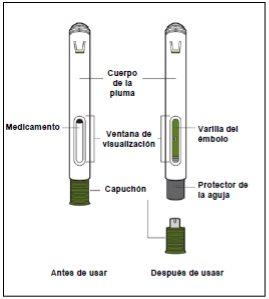
Фігура А
- Незнімайте ковпачок, поки не будете готові зробити ін'єкцію. Як тільки знімете ковпачок, незнову накривайте шприц-ручку.
Підготовка до ін'єкції
- Зіберіть матеріали для ін'єкції.
- Підготовіть чисту та гладку поверхню, таку як стіл або підвіконня, у добре освітленому місці.
- Видаліть шприц-ручку з коробки, зберігеної в холодильнику.
- Переконайтеся, що у вас є наступні матеріали:
- Шприц-ручка
- Ватний підпалин, змочений у спирті
- Турунда або марля*
- Ліпкий пластир*
- Контейнер для видалення колючих предметів*
*Предмети не входять до складу коробки.
- Перегляньте шприц-ручку.
Невикористовуйте шприц-ручку, якщо:
- Вона тріснута або пошкоджена.
- Термін придатності закінчився.
- Перегляньте лікарський засіб (див. Фігура Б).
Рідина повинна бути прозорою, безбарвною до світло-коричневої. Невикористовуйте шприц-ручку, якщо рідина є мутною або забарвленою, або якщо вона містить частинки. Примітка: Ви можете побачити бульбашки у рідині. Це нормально |
Фігура Б |
- Чекайте 30 хвилин.
- Покладіть шприц-ручку на кімнатну температуру протягом 30 хвилин, щоб вона自然но нагрілася.
Ненагрівайте шприц-ручку за допомогою джерел тепла, таких як гаряча вода або мікрохвильова печь.
- Виберіть місце для ін'єкції (див. Фігура С).
Ви можете зробити ін'єкцію в наступних місцях:
Неробіть ін'єкцію в шкіру, яка знаходиться на відстані менше 5 см від пупка, або яка є чутливою, пошкодженою, синякою або з шрамами. Примітка: Кожного разу, коли робите ін'єкцію, обертайте місце ін'єкції. Кожне нове місце ін'єкції повинно бути не менше 3 см від попереднього місця ін'єкції. |
Фігура С |
- Вимийте руки.
- Вимийте руки мильним розчином та водою, а потім добре висушіть їх.
- Очистіть місце ін'єкції.
- Очистіть місце ін'єкції ватним підпалином, змоченим у спирті.
- Дайте шкірі висохнути, перш ніж зробити ін'єкцію.
Недмухайте ні на місце ін'єкції, ні на нього.
Зробіть ін'єкцію
- Зніміть ковпачок (див. Фігура Д).
Неторкайтеся захисника голки. Якщо ви це зробите, ви можете поранитися голкою. |
Фігура Д |
- Помістіть шприц-ручку на місце ін'єкції (див. Фігура Е).
|
Фігура Е |
- Почніть ін'єкцію (див. Фігура Ф).
Примітка: Коли ви починаєте ін'єкцію, ви чуєте перший клік, а зелений поршень починає заповнювати вікно.
|
Фігура Ф |
- Завершіть ін'єкцію (див. Фігура Г).
|
Фігура Г |
- Видаліть шприц-ручку з місця ін'єкції.
Нетертіть місце ін'єкції. Примітка: Після видалення шприц-ручки з місця ін'єкції голка автоматично закривається (див. Фігура І). Примітка: Якщо зелений поршень не заповнює вікно повністю, ви не отримаєте повної дози. Не повторно використовуйте шприц-ручку в цьому випадку. Натисніть на вашого постачальника медичних послуг негайно. |
Фігура Х |
Фігура І |
Після ін'єкції
- Видаліть шприц-ручку (див. Фігура Й).
Незнову накривайте шприц-ручку. Примітка: Тримайте шприц-ручку та контейнер для видалення колючих предметів поза зором та поза досягненням дітей. |
Фігура Й |
- Країна реєстрації
- Діючі речовини
- Потрібен рецептТак
- Виробник
- Інформація є довідковою і не є медичною порадою. Перед прийомом будь-яких препаратів обов'язково проконсультуйтеся з лікарем. Oladoctor не несе відповідальності за медичні рішення, прийняті на основі цього контенту.
- Альтернативи до РЕМСІМА 120 мг РОЗЧИН ДЛЯ ІН'ЄКЦІЙ У ПЕРЕДНАПОВНЕНІЙ ШПРИЦ-РУЧЦІФорма випуску: РОЗЧИН ДЛЯ ІНФУЗІЙ, ЩО ВВОДИТЬСЯ ІН'ЄКЦІЙНО, 100 мгДіючі речовини: infliximabВиробник: Samsung Bioepis Nl B.V.Потрібен рецептФорма випуску: РОЗЧИН ДЛЯ ІНФУЗІЙ, ЩО ВВОДИТЬСЯ ІН'ЄКЦІЙНО, 100 мгДіючі речовини: infliximabВиробник: Pfizer Europe Ma EeigПотрібен рецептФорма випуску: РОЗЧИН ДЛЯ ІНФУЗІЙ, ЩО ВВОДИТЬСЯ ІН'ЄКЦІЙНО, НевідомоДіючі речовини: infliximabВиробник: Janssen Biologics B.V.Потрібен рецепт
Аналоги РЕМСІМА 120 мг РОЗЧИН ДЛЯ ІН'ЄКЦІЙ У ПЕРЕДНАПОВНЕНІЙ ШПРИЦ-РУЧЦІ в інших країнах
Найкращі аналоги з тією самою діючою речовиною та терапевтичним ефектом.
Аналог РЕМСІМА 120 мг РОЗЧИН ДЛЯ ІН'ЄКЦІЙ У ПЕРЕДНАПОВНЕНІЙ ШПРИЦ-РУЧЦІ у Україна
Лікарі онлайн щодо РЕМСІМА 120 мг РОЗЧИН ДЛЯ ІН'ЄКЦІЙ У ПЕРЕДНАПОВНЕНІЙ ШПРИЦ-РУЧЦІ
Консультація щодо дозування, побічних ефектів, взаємодій, протипоказань та поновлення рецепта на РЕМСІМА 120 мг РОЗЧИН ДЛЯ ІН'ЄКЦІЙ У ПЕРЕДНАПОВНЕНІЙ ШПРИЦ-РУЧЦІ – за рішенням лікаря та згідно з місцевими правилами.




